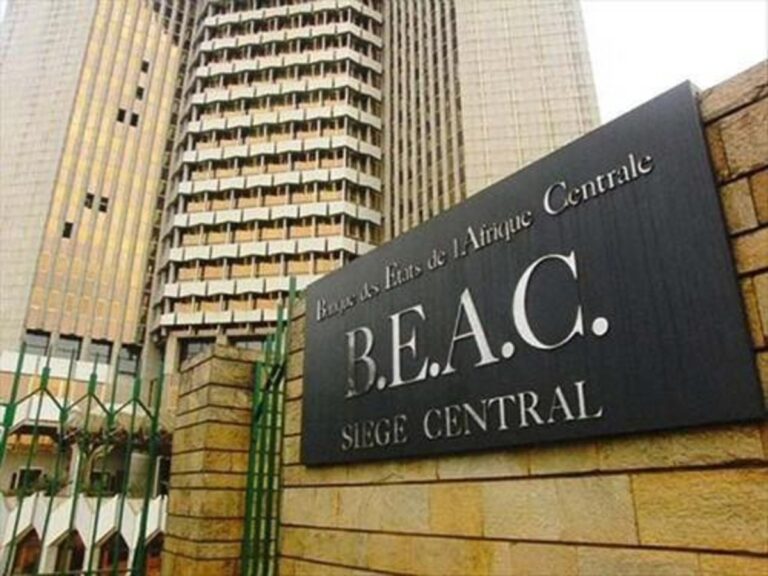🎧 Listen to This Article
Why a fragile economic rebound in Central Africa could make or break regional fiscal stability
On April 11, 2025, the Central African Economic and Monetary Community (CEMAC) took a pivotal step at the 21st Ordinary Session of the Steering Committee (COPIL) for its Economic and Financial Reform Program (PREF-CEMAC), held at the Bank of Central African States (BEAC) headquarters in Brazzaville, Republic of Congo. Presided over by Congo’s Finance Minister Christian Yoka, the session reflected cautious optimism: growth is back — but barely.
The revised reform matrix discussed during the session represents a crucial update, integrating emergency measures ordered by the Heads of State in December 2024 and policy additions recommended by the Monetary Union of Central Africa (UMAC). These adjustments aim to reinforce fiscal health, stabilize financial systems, and strengthen the region’s external position — but the road ahead remains steep.
Why This Matters
CEMAC’s return to growth — real GDP rose to 2.6% in 2024 from 1.9% in 2023 — offers a glimmer of hope for a region historically vulnerable to external shocks, commodity price fluctuations, and governance volatility. But as Finance Minister Yoka rightly notes, this growth remains fragile, and without structural transformation, it risks evaporating under pressure from rising debt and weakening external balances.
The region narrowly avoided prolonged stagnation after recessionary periods in 2016 and 2020. BEAC’s forecasts are modestly encouraging: 2.9% in 2025 and 3.6% by 2026. However, these figures fall short of what’s needed to reduce poverty, finance infrastructure, and drive economic diversification. Inflation may have eased to 4.1% in 2024 from 5.6% in 2023, but it still overshoots targets, squeezing households across Cameroon, Chad, Equatorial Guinea, Gabon, Congo, and the Central African Republic.
Crucially, CEMAC’s economic rebound risks being short-lived if structural imbalances persist. Public debt burdens are high, private sector growth remains sluggish, and progress on regional integration — vital for scale, mobility, and competitiveness — is slow.
Long-Term Implications
If the revised PREF-CEMAC matrix is successfully implemented — particularly its 32 new policy measures — the region could transition from fragile recovery to resilient growth. These include:
- 11 additional measures in fiscal policy, targeting revenue mobilization and public spending efficiency.
- 19 actions focused on monetary policy and financial system stability, such as deepening the unified financial market and de-dollarization efforts.
- 2 key structural reforms, aimed at improving governance and investment climate.
But even the most well-designed reforms face implementation risk, especially amid political instability and limited institutional capacity.
Failure to accelerate structural reforms would have systemic consequences:
- Investor confidence will erode, leading to higher risk premiums and lower capital inflows.
- Debt sustainability may worsen, potentially triggering a future IMF intervention.
- Youth unemployment and informal sector expansion could worsen social unrest.
- Regional financial integration may stall, limiting access to capital and cross-border investment.
To build lasting resilience, the following strategies should be prioritized:
- Strengthen institutional accountability — especially in monitoring PREF-CEMAC implementation at the national level.
- Enhance domestic resource mobilization through modern tax administration and digitalization of customs.
- Promote regional financial integration — a unified capital market must become more than a promise.
- Support private sector-led growth via access to finance, energy infrastructure, and SME development.
- Boost transparency and debt management, including publishing full public debt data and contingent liabilities.
As Yoka emphasized, this is a pivotal moment: CEMAC has the roadmap, but the region must deliver results by 2029. The window to move from crisis management to genuine transformation is narrowing.
Real-World Reference
CEMAC’s trajectory mirrors earlier recoveries in the West African Economic and Monetary Union (WAEMU) post-2014 oil shocks. WAEMU’s successful rebound — built on robust fiscal rules and regional infrastructure investment — offers a roadmap, though CEMAC’s security challenges and weaker institutions present additional hurdles.
CEMAC is at a critical fiscal juncture. The region is demonstrating macroeconomic coordination rare in its history. But the reforms must move from paper to pavement — real budget reforms, real market unification, real governance improvement. Without that, growth will remain a statistical illusion, not a lived reality for the people.
For further details, clarification, contributions, or any concerns regarding this article, please contact us at editorial@tax.news. We value your feedback and are committed to providing accurate and timely information. Please note that our privacy policy will handle all inquiries



